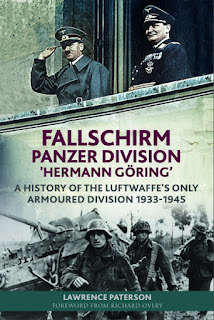Zeppelin Inferno - The Forgotten Blitz 1916 written by Ian Castle and published
by Frontline Books - £25.00 - Hardback - Pages 400
While this new system could give early warning of approaching raiders, there was a lack of effective weaponry with which to engage them when they arrived. Behind the scenes, however, three individuals, each working independently, were striving for a solution. The results of their work were spectacular; it lifted the mood of the nation and dramatically changed the way this campaign was fought over Britain.
The German air campaign against Britain in the First World War was the first sustained strategic aerial bombing campaign in history. Despite this, it has become forgotten against the enormity of the Blitz of the Second World War, although for those caught up in the tragedy of these raids, the impact was every bit as devastating. In Zeppelin Inferno Ian Castle tells the full story of the 1916 raids in unprecedented detail in what is the second book in a trilogy that will reveal the complete story of Britain’s ‘Forgotten Blitz’.
A fascinating book about a fascinating subject in my own opinion. I have always found it staggering the size of Zeppelins and how these huge gigantic ships hang in the air. I used to live near RAF Cardington, Beds where they now keep I presume a couple of airships for promotional events and they are big, but much smaller than those used in the Great War. But it amazes me how if you were a child during WWI and you saw one of these coming over your town or area, must have left you in awe that these things were from a different planet.
Ian Castle has written a really good book covering 20 chapters taking the evidential views and opinions of people at the time. The book follows the dates of the German blitz in and around the country, and we get to learn about the amount of damage caused. We also get essential eyewitness accounts and what it was like to experience these events and people’s thoughts. The accounts are good to read and really help inform the book and the subject, at the back of the book is also a number of blitz reports explaining who and how many died. I enjoyed this book and would recommend it to anyone, a subject that doesn’t get the amount of attention it deserves.











.jpg)


.jpg)







.jpg)
